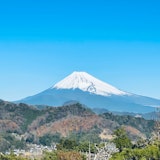Kitakuni Highway "Unno Yado"
The townscape of Unno Yado is a traditional style of houses in harmony with the thatched-roof buildings of the Edo period and the robust silkworm buildings of the Meiji era and later.
The irrigation water streams in the center of the road and the beautiful houses with lattice doors on both sides of it make you feel a quiet atmosphere reminiscent of a historical hometown.
History of Unno Yado
Unno Yado was opened in the 2nd year of Kanei 1625 as a inn station in Kitakuni Highway. The Kitakuni Highway is an important highway connecting the Nakasendo Highway and the Hokuriku Expressway. In addition to the transportation of gold mined in Sado and the change of attendance of the daimyo of Hokuriku, there was also frequent traffic with Edo, and there were many pilgrims to Zenkoji.
After the adjacent Tanaka inn was damaged by the great flood in Kanho 2 and the main camp was moved to Unno Yado, it was very busy, with 59 denma houses and 23 hatago.
After the Shukuba-juku function was lost in the Meiji era, it moved to a sericulture village.
Since the traditional houses of Unno Yado have been preserved to this day, it was selected as one of the "100 Best Roads in Japan" in 1986 Showa 61 and as an "Important Preservation District for Groups of Traditional Buildings" in 62.
⭐︎Highlights ⭐of this photo︎
Design of traditional buildings
Pay attention to the protruding parts on both sides! It's called "Honudatsu" and it's from the Edo period. There is also a "sleeve udatsu", which is from the Meiji era. Neither of these was something that could only be done from a wealthy family. It is from this place that the phrase "depression does not rise" was born.
Show original text

![[Image1]Kitakuni Highway](https://img-cooljapan.imgix.net/member_posts/image/9c8483d39d76417577acfbc79d1ccc2dc251f628.jpg?w=1000&h=750&fit=min&auto=format&q=70)


